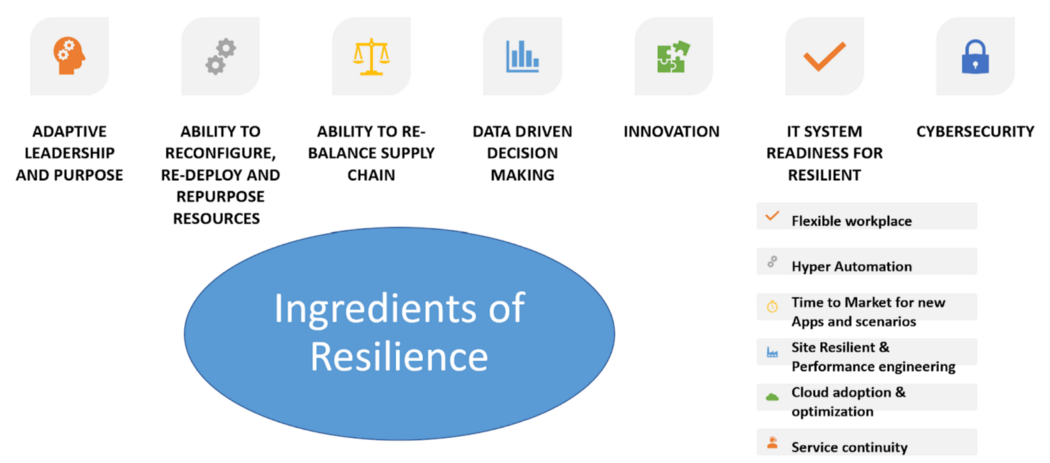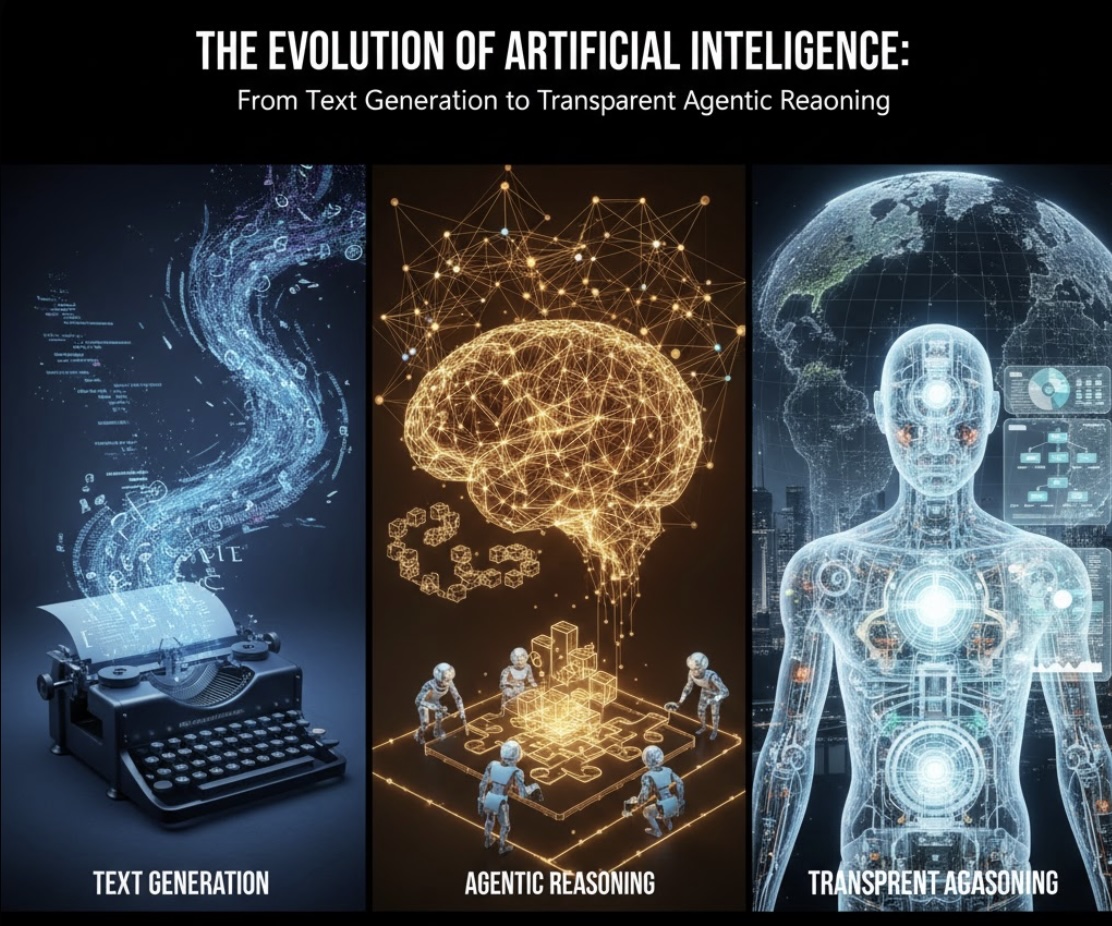Mar31

The Covid-19 pandemic is, without doubt, the biggest challenge the world has encountered in this century and arguably the biggest since the Second World War. As the year 2020 draws to a close with mixed news — positive on the vaccine development front only to be offset by reports of a new, powerful strand of the novel coronavirus emerging — the world will have to soldier on in a long battle ahead.
Given the ongoing COVID-19 crisis, the need for resilience has never been greater. Resilience is the ability to “sustain and recover quickly from difficult, uncertain scenarios.” However, amid chaos, fear, uncertainty, and often insufficient resources, the call to "be resilient" may feel like an impractical demand, especially if you view resilience as something one either has or does not have.
As uncertainty prevails and more efforts are made by governments and health researchers to find a lasting solution to the pandemic, the onus of adjusting to the new normal rests with enterprises and management. Leaders must consider the resilience of individuals, as well as the resilience of their teams, organization, culture, and system. Better systems resilience can help businesses limit the damage caused by the pandemic and create a future that is immune to such disruptions.
Business continuity hinges on the solutions provided by the technology wings to beat the Covid blues. It also depends on the innovations that chief information officers (CIOs) and IT managers carry out to make processes, systems, and businesses adapt better. In this blog, I will talk about certain frameworks needed for seamless operational continuity.
Data shows that those enterprises that were already focusing on contingency plans and had synchronized their IT capabilities and supply chain in that direction absorbed the shock better. They were better equipped to deal with the new realities such as working remotely, fall or a sudden spike in demand, supply chain disruptions, lack of intra-organizational synergy, and communication challenges to name a few.
According to Accenture’s Future Systems research survey of 8,300 companies conducted before the COVID-19 crisis, only a small minority of companies — the top 10 percent — had cracked the code on systems resilience.
Needless to say, the IT managers in these companies adapted much better and so did the business. Some reconfigured traffic to maximize capacity for critical applications when there was a surge in demand while others moved low-priority applications to the cloud to free valuable system and human resources. One large retailer, for example, was able to handle a massive surge in sales by offloading traffic from the core e-commerce site to a cloud-based coupon application, and in another case, a hospital adopted a new virtual assistant to manage the massive increase in incoming calls during the COVID-19 crisis. All these were possible because the IT infrastructure was in place and the managers put in quick thinking to come up with effective solutions in a short period.
For others, who are still not quite there, the three Rs — respond, reset and renew — that I have written about in the past can prove to be very effective.
There are a few areas that are integral to a resilient system and every organization needs to work towards these to ensure foolproof systems resilience. These are:
When the business environment is dynamic, to begin with, and disruptions such as Covid-19 further compound the equation, organizations need the right hands to steer the ship. The leadership needs to understand the culture, aspirations, and goals of the organization and only an adaptive leadership can create frameworks that can provide the right momentum with each time lethargy or panic sets in. That happens because adaptive leadership is well aware of the purpose of the enterprise and can link individual aspirations to organizational goals.
While technology is critical, managing people is the bedrock for seamless functioning. In a connected world, businesses are more integrated in terms of workers, vendors, customers, partners, and suppliers, making business continuity and pandemic plans far more complex to test and carry out. Employees and business partners are the most important cogs in any organizational wheel and to make them familiar with the crisis-induced changes is imperative. This is where proven models in the past that were considered efficient can prove to be a bone of contention between those who rigidly defend these models and others wanting to completely do away with them. As such employees have to be briefed about the changing needs, the human resource wing has to skill and reskill them to reset their performances and align those better with the changing organizational goals.
Similarly, partners have to be told about the need for course correction and how the company has planned for that scenario. They have to be informed about the challenges the management expects as it tries to build a resilient system and the roadmap to overcome those. Forming trusted bonds between the employer and the employees that last long is paramount.
The intensity with which disruption can hit a supply chain can vary but limited exposure may not necessarily mean complete immunity. In an integrated world, even a small problem in the assembly line producing the tiniest of the component can bring supply chains to a halt. A resilient system is one that anticipates the scenario to make sure the controllable fall in place and is quick to adapt when a crisis erupts. This can be achieved by investing in disaster-proof physical assets, diversifying the list of suppliers, designing products with common components, enabling swift movement of products and services across platforms, and strengthening industry ecosystems. All this may involve investments but the enterprises will save a lot in the long term. Resilience and efficiency should not come at the cost of one another.
Using newer technologies, such as analytics and artificial intelligence, help with improving transparency and efficiency on the one hand, and responding to the crisis on the other. Data is a critical tool to identify vulnerabilities and can help predict scenarios to identify the most effective solution, should a crisis hit. Several Fortune 500 companies are already using data insights for inventory and risk management.
Since the pandemic has hastened the digital transformation, the IT infrastructure and the business decision-makers should also work towards achieving what is called the Product mindset. This is essentially achieving better synergy between the verticals and coming up with faster solutions. The guiding principles to achieve these are minimizing time to value, solving for need, and excelling at change.
Service continuity:At a time when companies are looking to get expertise on board in lesser time than usual and when identifying the right resources through virtual onboarding sessions is becoming a norm, companies need to identify and prioritize their requirements to ensure no disruption in service.
Organizations should reorient their IT processes to meet any new challenges that can logjam even the best of workflows.
As IT infrastructure and CIOs are set to play a major role in building flexible systems, it is natural that the vulnerabilities need to be understood and gaps plugged in time. Systems have to be made fast to react in case of an external threat that might come in their way. More robust systems and firewalls need to be put in place to avoid any breaches. The effectiveness of the existing cybersecurity mechanisms should be properly evaluated and wherever possible, alternatives should be considered to minimize risks.
Adjusting to the new normal will continue in 2021. For all we know, the new normal may be significantly different from what we envisage. A lean and agile system, backed by proper allocation of resources and investments, will help build higher resilience in the existing framework. These measures, if implemented in time, will pay larger dividends for a long time to come and make life easier during the next crisis, whatever its form may be.
Keywords: Cloud, COVID19, Digital Twins
 The best is in the middle: why the C-suite must be the top bun
The best is in the middle: why the C-suite must be the top bun The Philosophical Schism in AI: Language, Causality, and the Divide Between LLMs and World Models
The Philosophical Schism in AI: Language, Causality, and the Divide Between LLMs and World Models The Hidden Cyber War on Wheels: Why Electric Vehicles Have Become a National Security Concern
The Hidden Cyber War on Wheels: Why Electric Vehicles Have Become a National Security Concern The Evolution of Artificial Intelligence: From Text Generation to Transparent Agentic Reasoning
The Evolution of Artificial Intelligence: From Text Generation to Transparent Agentic Reasoning In Order to Develop Your Future Leaders — You Need to Let Go
In Order to Develop Your Future Leaders — You Need to Let Go